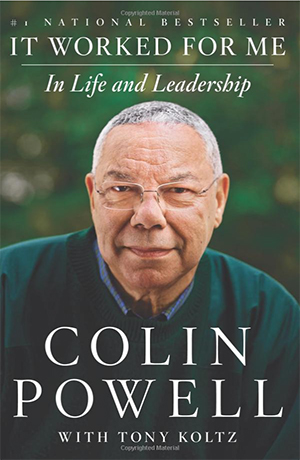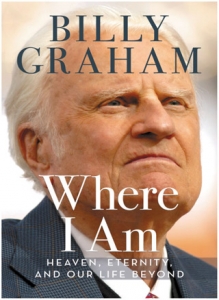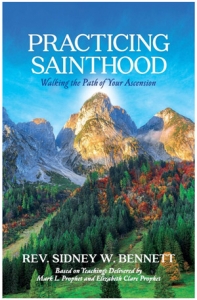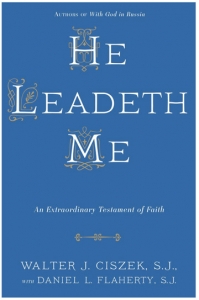How to Write an Author’s Name on a Book
How to Write an Author’s Name?
What is the proper way to present the author’s name on the cover? In this case the author has a doctorate and is retired military. Which of these is best?
—-a) Colonel James G. Campbell, USA, Retired
—-b) Dr. James G. Campbell (Colonel, USA, Retired)
—-c) James G. Campbell, Ph.D. (Colonel, USA, Retired)
—-—-—-—- – C.B. in FLA
Dear C.B. in FLA, How to Write an Author’s Name on a Book
Your name is likely to appear differently in different places on the book. It may be just your name in one place. and include more information about you (degrees, jobs you’ve held, or other information) in another.
Below I’ve covered five options:
#1) Cover of Trade Books: Presenting one’s name on a book cover is like signing your name. When one presents one’s name, one does not give oneself an honorific, title or rank. On my book I did not list my name as Mr. Robert Hickey. I simply used Robert Hickey.
On his book It Worked for Me: In Life and Leadership, Colin Powell simply listed his name as Colin Powell. See below.
On the book’s cover Colin Powell followed tradition and presents just his name. He lists his rank, retired status, degrees, honors, awards, etc. elsewhere (e.g., in his biography on the dust jacket’s back flap).] There are plenty of other places to include everything.
For military personnel, branch of service and retired are part of the name on official communications. But don’t use these on the cover. Include these in ‘about the author (your bio) or in the flap copy.
Same with bachelors and masters degrees. Find a place for them off the cover.


Robert Hickey author of “Honor & Respect”
#2) Covers of Books by Academics and Doctors: If it is a scholarly book -or- the doctorate is pertinent to one’s qualifications to offer the book’s advice – then “Dr.” or the post-nominals for the degree are often included. E.g., a book on wellness or healthcare? You do see author’s names including ‘Dr.’ before – or the post-nominal for their training after their name. Remember in the U.S. style, it’s either ‘rank before’ or ‘degree after’, never both at the same time.
For example:
——Dr. James G. Campbell
—-—-or
—-James G. Campbell, Ph.D.
Same would be true for a textbook on a technical topic. You do see Dr. or a post-nominal.


Robert Hickey author of “Honor & Respect”
#3) Covers of Books by Officials Addressed as the Honorable (Full Name): For those addressed as ‘the Honorable (Full Name)’ … this form is never used when presenting one’s own name. So it should not appear on a book’s cover where you are listed as the author. Your name as the Honorable (Full Name) would only appear in text if someone else is writing about you (in the third person) e.g, as on the flap text.



Robert Hickey author of “Honor & Respect”
#4) Covers of Books by Clergy Addressed as the Reverend (Full Name): For those addressed as ‘the Reverend (Full Name)‘ .… the Reverend is never used when presenting one’s own name. Others use it when addressing you. So avoid the Reverend (Full Name) on a book’s cover where you are listed as the author. It could appear in text if someone is writing about you (in the third person) e.g., on the flap text or in an endorsement.
——Sometimes ‘Rev. (Full Name)’ is used on a cover, but not always. See the examples.
——For priests the same patterns appear: their name with the post-nominals of their order – the most formal form for their name – typically appears on the cover. But sometimes, less formally, they will use Father (Full Name) or for a female priest, Mother (Full Name).
#5) Covers of Books by Rabbis: As far as I can tell Rabbi (Full Name) is always used on the cover. Post nominals for academic degrees– doctorates, JDs, masters, bachelors – all would be noted elsewhere, not included as part of the name.
– Robert Hickey




Robert Hickey author of “Honor & Respect”
Related Posts:
———Author’s Name on a Book
———Name Badge or Tag
———Writing the Names of Deceased Persons
———Names on an Award, Certificate, Diploma or Plaque
———Naming a Road, Gallery or Building
———Names on Place Cards
———Use of Post-nominal Abbreviations
———Use of Sr., Jr., II, III, IV, etc. Sequence Post-Nominals
———Name on a Tombstone or Grave marker
———Use of ‘The Late” with Names
———Your Signature
Robert Hickey author of “Honor & Respect”
When Should You Use the Forms on this Page?
You can use these forms of address for any mode of communication: addressing a letter, invitation, card or Email. (If there are differences between the official and social forms of address, I will have mentioned the different forms.) The form noted in the salutation is the same form you use when you say their name in conversation or when you greet them.
___What I don’t cover on this site are many things I do cover in my book: all the rules of forms of address, about names, international titles, precedence, complimentary closes, details on invitations, place cards, all sorts of introductions, etc. I hope you’ll get a copy of the book if you’d like the further detail.
Not Finding Your Answer?
—-#1) At right on desktops, at the bottom of every page on tablets and phones, is a list of all the offices, officials & topics covered on the site.
—-#2) If you don’t see the official you seek included or your question answered send me an e-mail. I am pretty fast at sending a reply: usually the next day or so (unless I am traveling.) Note: I don’t have mailing or Email addresses for any of the officials and I don’t keep track of offices that exist only in history books.
—-#3) If I think your question is of interest to others, Sometimes I post the question – but always change all the specifics.
— Robert Hickey
Robert Hickey author of “Honor & Respect”
Recommended Resources: The Protocol School of Washington (PSOW) and Protocol and Diplomacy International – Protocol Officers Association (PDI-POA) For more information see the Protocol Resources page.

